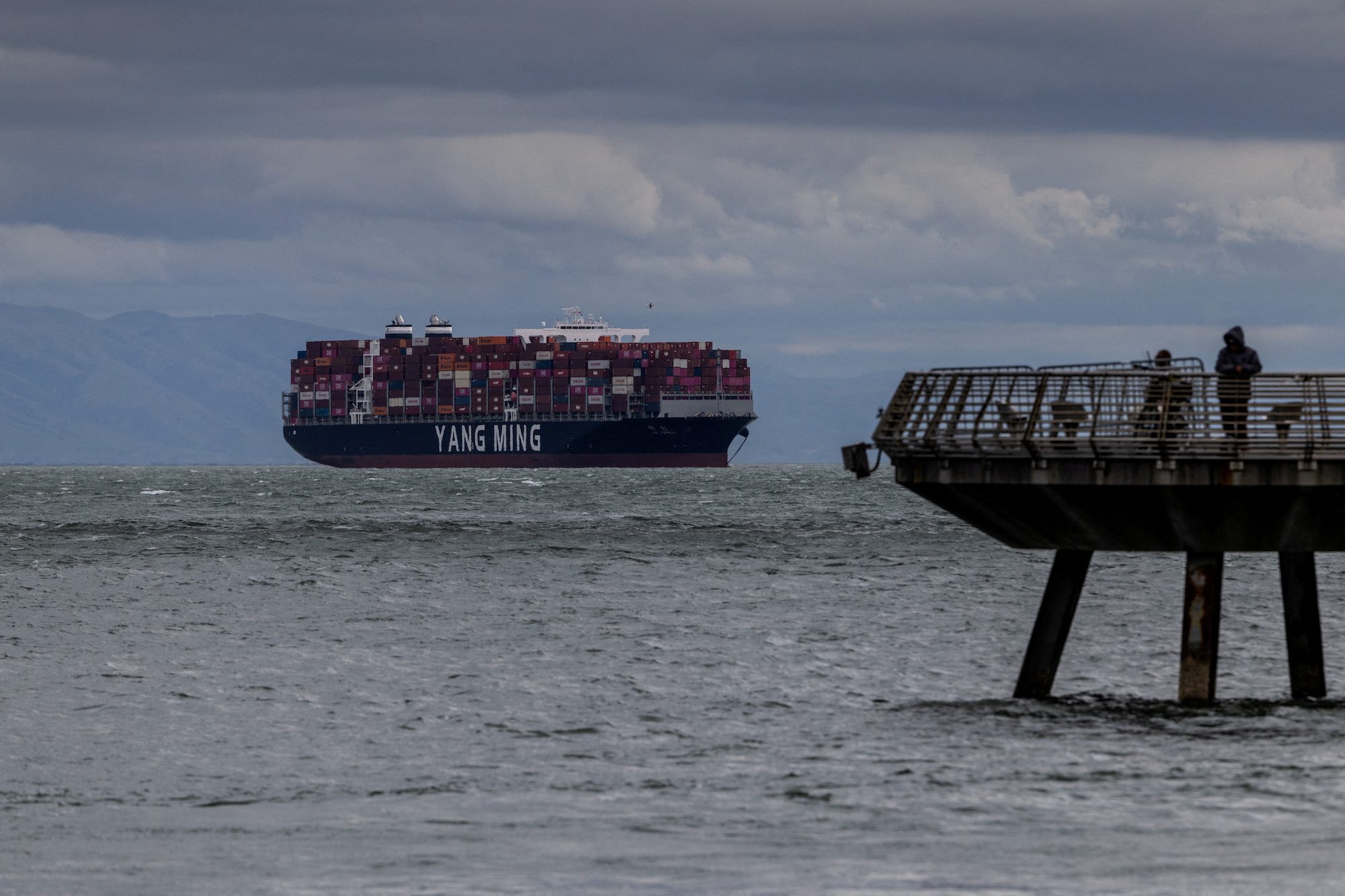Eternity C Sinks in Red Sea; Major Search and Rescue Underway
A mission was under way on Wednesday to rescue crew from the Eternity C cargo ship which sank in the Red Sea following an attack that killed at least four crew members.

FILE PHOTO: A cargo ship full of containers is seen at the port of Oakland as trade tensions escalate over U.S. tariffs, in Oakland, California, U.S., February 3, 2025. REUTERS/Carlos Barria/File Photo
Container shipping between China and the United States faces unprecedented disruption following the implementation of new Trump administration tariffs on U.S. imports from China, with industry leaders warning of potential widespread supply chain impacts and economic consequences that could rival the pandemic.
According to Ryan Peterson, Founder and CEO of Flexport, ocean container bookings from China to the United States have plummeted by over 60% in just three weeks since the new tariffs took effect. The dramatic decline follows the introduction of reciprocal tariffs that went into effect on April 9, setting rates at 145% for China and 10% for all other origin points.
Container shipping expert John McCown reports that China represented approximately 40% of U.S. inbound containers in March. The impact of these tariffs is expected to materialize in May for West Coast ports and June for East/Gulf Coast ports, due to the loading cutoff dates at origin ports.
The situation is further complicated by an upcoming USTR ship fee plan scheduled for October, which will impose additional fees on containerships on US voyages operated by Chinese carriers or vessels built in China.
“It is a fair statement to say that the container shipping sector has never faced the sort of macro headwinds that it is now facing,” stated McCown.
The immediate industry response has been significant. Ocean carriers have already canceled 81 sailings for April in the transpacific trade lane, exceeding the 51 sailings blanked during the peak of the pandemic, according to McCown. Recent reports indicate stark reductions in upcoming Asia to West Coast loads of 28% and Asia to East Coast loads of 42%.
Hapag-Lloyd said Wednesday that 30% of shipments from China to the United States have been cancelled, leading to a “massive increase” in demand from Thailand, Cambodia, and Vietnam.
The tariffs have also prompted the National Retail Federation (NRF) to dramatically revised its import forecasts downward following 19 consecutive months of year-over-year growth . May 2025 volumes are now expected to drop 20.5% yoy to 1.66 million TEUs, while June could see an even steeper 26.6% decline to 1.57 million TEUs. U.S. imports in the first half of 2025 is now projected to decline 2.9% year-over-year to 11.73 million TEU, a stark reversal from earlier forecasts of 5.7% growth. The NRF further warns full-year 2025 imports could fall by 15% or more, effectively erasing most of 2024’s 14.7% growth.
Ryan Peterson warns of severe economic implications. “The U.S. imports $600B worth of goods from China every year, 95% of that via ocean freight. Those goods sell at retail for ~$2T,” he states. He predicts potential mass shortages this summer as freight arrivals decline.
Craig Fuller, CEO and Founder of FreightWaves, agrees. “No one is thinking about back to school, but this is the season when they are being shipped from overseas. Might want to load up early,” he wrote on X. He added that August is when the first major product shortages are expected to emerge.
The disruption could lead to a complex “bullwhip effect” if tariffs are suddenly relaxed, warns Peterson. With ships already being repositioned to other trade lanes and a massive surge of cancelled sailings out of China in recent weeks, the industry might struggle to handle a potential surge in rebookings. He says this could result in ocean freight pricing surges potentially approaching the levels seen in 2021-22 during the COVID-19 crisis, when container rates from China to the U.S. reached nearly $20,000.
The air freight sector could also face pressure, as Peterson notes that just a 1% conversion of ocean freight volume to air is sufficient to push prices “back above $10/kilo as we saw during Covid.”
The situation represents what some consider the most significant challenge ever faced by the container shipping sector, rivaling even the COVID-19 pandemic, with implications extending beyond U.S.-China trade to impact global shipping lanes.
“The economy has COVID, except there is no PPP or stimulus coming. The only cure is a deescalation of the tariffs,” Fuller wrote on X.
McCown stresses that container shipping operates most efficiently with consistent rhythm. “Anything that disturbs that equilibrium injects inefficiency and unnecessary costs into those systems. Unfortunately, many of the actions that have already occurred have disturbed that equilibrium and injected uncertainty and even chaos in that system. It remains unclear how this will play out along the spectrum of both container volume and inflation.”
While Trump has indicated potential reduction in tariff rates from the current 145%, industry stakeholders are urging quick action to prevent further supply chain disruptions.
“Still time to avoid a crisis, but the clock is running out,” wrote Fuller.

Sign up for gCaptain’s newsletter and never miss an update

Subscribe to gCaptain Daily and stay informed with the latest global maritime and offshore news


Stay informed with the latest maritime and offshore news, delivered daily straight to your inbox
Essential news coupled with the finest maritime content sourced from across the globe.
Sign Up